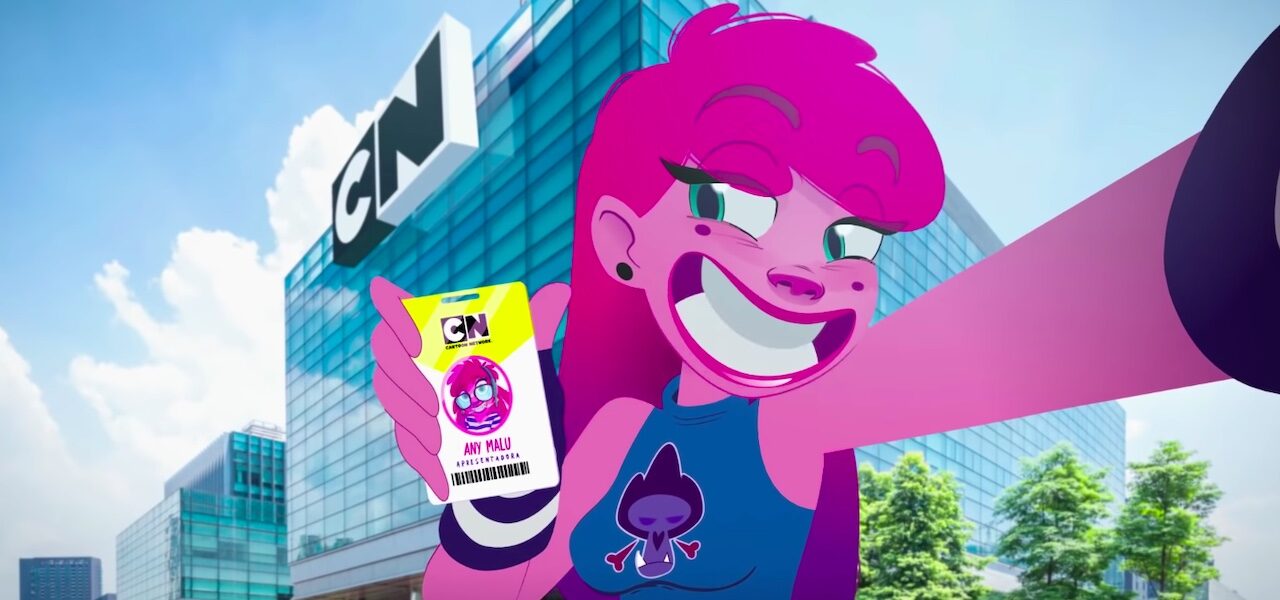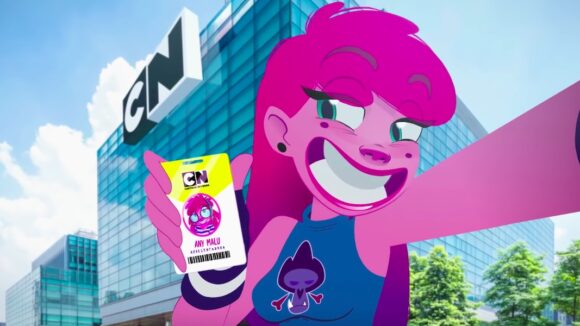

Meet Any Malu, The Animated Influencer From Brazil Who Was Hired By Cartoon Network
She has three million subscribers on Youtube and another half-million on Instagram. She likes to talk about her life, but is equally comfortable parodying Disney movies and Picasso paintings. Her hair and skin are two different shades of pink. She’s fictional.
She is Any Malu, billed by her creators her as “the first 100% animated Youtuber” (she joined the platform in August 2015). She’s certainly the most famous one in Brazil, her homeland. Fans love her so much that they turn up at the creators’ studio, hoping to meet her. Cartoon Network likes her too: on the strength of her Youtube series, its Latin American channel gave the character her own show, which has proved a hit with kids aged 4–11.
This is quite an outcome for a character that started life as a glorified mascot. Combo Estúdio, a production company based in Rio de Janeiro, created Any Malu as a tool to market its services, only for her to become their best-known product. The studio has worked with Disney and Google, and is contributing animation to the forthcoming Netflix feature America: The Motion Picture. But Any Malu remains their star, a triumph of homegrown IP.
How do you accidentally create an animated influencer — and once you have, how do you capitalize on it? We contacted Marcelo Pereira, a founder and partner at Combo, to find out…

Marcelo Pereira: When one starts a new business, in whichever area, usually the financial resources are limited, as well as the market recognition. After a few months [of operation as a studio], we realized the market still didn’t know us, despite the fact that Combo’s associates were working in animation and entertainment for many years.
So, instead of slowly building our “portfolio,” we decided to show the world our expertise in animation by creating a “Youtuber,” who would “post” our work online. Any Malu was supposed to be our spokesperson and give us the opportunity to reach many more people in the animation business. She was born much more as a marketing strategy than as a long-term project.
We realized we had something valuable when human digital influencers heard about the project and started talking to us about it. When we premiered Any Malu on Youtube, there had already been a lot of hype and her channel grew really rapidly.
The fans started following her on social media and many of them even called Combo’s headquarters trying to speak with her. We got to a point where we had to remove our address from our website, because we were starting to receive fans almost on a daily basis (they always arrived without scheduling an appointment and, usually, when we were at the peak of our workday).
The first time we introduced Any Malu to Cartoon Network, we hadn’t the slightest idea of what we were doing. We had never done anything like that, and we actually didn’t know what kind of content we could produce for CN. On the other hand, they loved the character and the content on her social media. So, we concluded, among ourselves, that it was necessary to mature the IP and present her [such that] she would become “irresistible.”
After a while, we produced an Any Malu episode in collaboration with Regular Show, where the characters play games together. It was a huge hit and that was the moment we realized that kind of format would actually work for her. We developed Any Malu Show and presented the content to Cartoon Network once again.
Any Malu was actually “hired” by Cartoon Network to host the show. She has a contract of her own with CN. On Any Malu’s Youtube channel, the content is exclusively and entirely ours. [Watch a video of her “first day” at the channel below.]
After four years animating the character, we thought that part of the Youtube content could be reused on the tv show. But this plan started sinking when, during pre-production, we came across a problem: Any Malu’s rig (we use the cut-out technique on Toon Boom) had many limitations. For the Youtube channel we didn’t actually need much action, and she mostly appeared from the waist up.
When we realized it wouldn’t be possible to reuse her rigs and bank images, we started producing original content. We still use the Youtube channel as a reference, though. [Throughout, the writing and production] team hasn’t changed much.
Our next step is to perform live productions with the character. It is always a challenge to work with “live” animation — we’ve already had some experiences with Any Malu. We’ve had calls with voice actors which we animated later on. We also did presentations with pre-recorded Any Malu participations. Now, we are searching for new ways of doing that, with a live-action Any Malu or real-time animation, for instance.
The Brazilian animation market has evolved really fast. In recent years, the quality has increased so much it can be compared to European and North American studios. In our country, though, it’s quite hard to find and train animators. There is a very limited number of universities that offer courses in this area.
Concerning the creation of original animated IP, internationalization was a big problem, due to the fact that many of our IPs were [deemed] “too local.” But that has been changing over the years. Still, we have scarce investment in this area. We hope that with this new wave of VOD streaming services coming up, many more Brazilian studios, original productions, and content can be shared all over the globe.
(Pereira’s comments were taken from replies to questions sent by email. They have been lightly edited for brevity and clarity.)

.png)